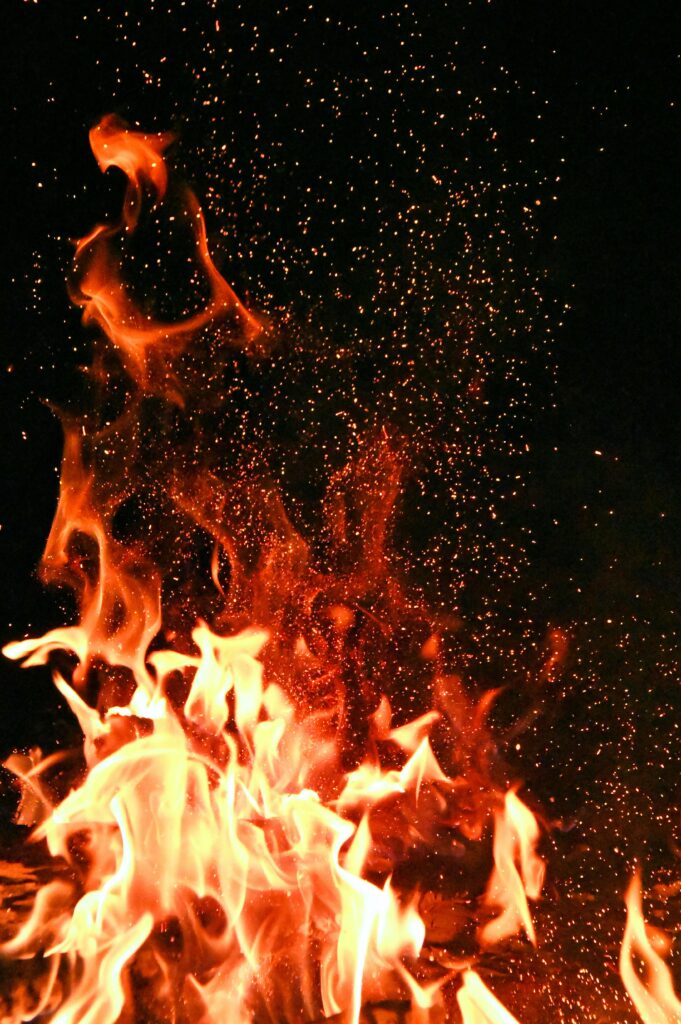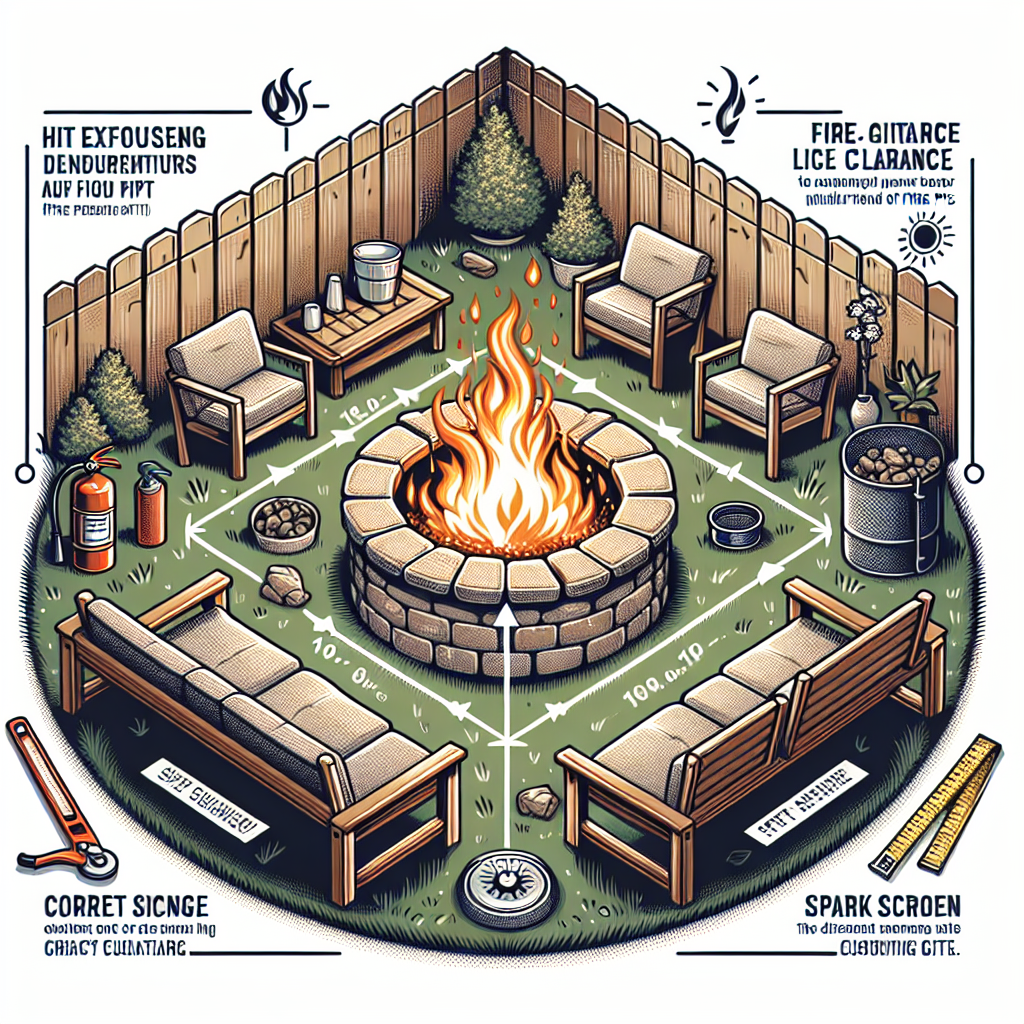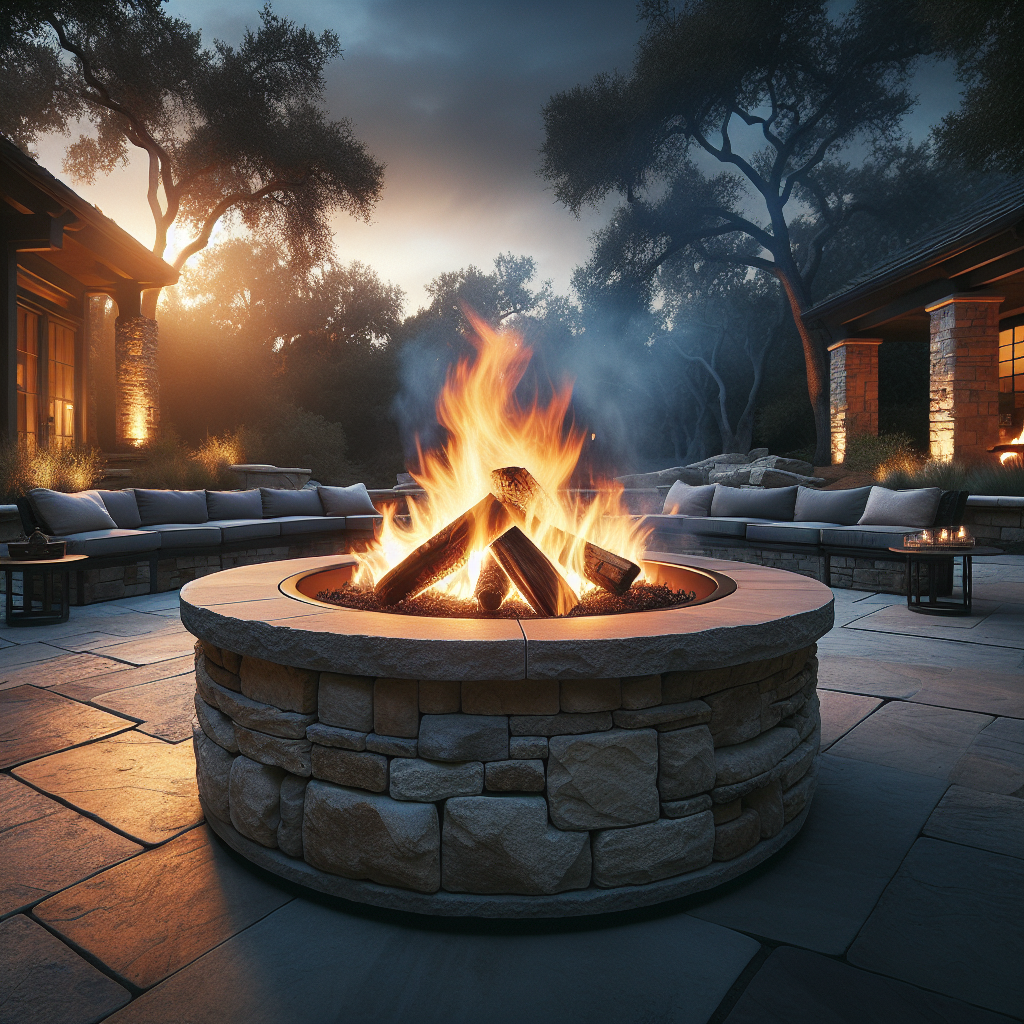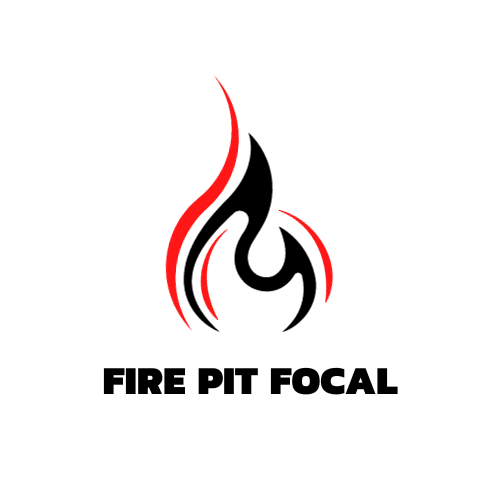So, you’ve just purchased a beautiful fire pit for your backyard, and now you’re ready to create a cozy atmosphere for those chilly evenings. But before you can start gathering around the flames, it’s crucial to understand how to calculate the appropriate clearance distance for your fire pit. This essential measurement will ensure the safety of not only yourself but your property as well. In this article, we will guide you through the simple yet important steps to determine the ideal clearance distance for your fire pit, allowing you to enjoy warm and worry-free nights in your outdoor space.

Factors to Consider When Calculating Clearance Distance
Location and Surroundings
When calculating the appropriate clearance distance for a fire pit, the first factor to consider is the location and surroundings. Take note of any overhanging structures, such as trees or roofs, that could potentially catch fire if the fire pit is too close. Evaluate the proximity of any flammable materials, such as dry vegetation, wooden fences, or patio furniture, that could present a fire hazard. Additionally, assess the wind direction in the area to ensure that sparks or embers from the fire pit will not be carried towards any nearby flammable objects.
Type of Fire Pit
The type of fire pit you have will also impact the clearance distance calculations. Different types of fire pits have varying levels of heat and flame characteristics, as well as different safety features. The four main types of fire pits to consider are in-ground fire pits, portable fire pits, chimineas or covered fire pits, and permanent fire pits. Each type has its own unique considerations when determining the appropriate clearance distance.
Size of Fire Pit
The size of the fire pit is another important factor in calculating clearance distance. Measure the diameter or length of the fire pit to determine its size. A larger fire pit may generate more heat and flames, requiring a larger clearance distance to ensure safety. Consider the potential radius of heat and sparks produced by the fire pit, as this will also influence the clearance distance required.
Heat and Flame Characteristics
The heat and flame characteristics of your fire pit will affect the clearance distance calculations. Consider the flame height and the potential for sparks or embers. A fire pit with a higher flame height or greater spark production may require a larger clearance distance to prevent accidental ignition of nearby flammable objects. Additionally, assess the heat radiating potential of the fire pit to ensure that it will not damage any surrounding structures or pose a safety risk.
Building Codes and Regulations
Lastly, it is important to consider any applicable building codes and regulations when calculating clearance distance for your fire pit. Different jurisdictions may have specific requirements regarding the distance between the fire pit and structures, property lines, or other objects. Research and familiarize yourself with the local regulations to ensure compliance and prevent any legal or insurance implications.
Determining the Minimum Clearance Distance
Check Local Regulations
Before proceeding to calculate the clearance distance, it is crucial to research and understand the local regulations governing fire pit installation. Municipalities often have specific rules and requirements that dictate the minimum distance that must be maintained between the fire pit and certain objects, such as structures, property lines, or vegetation. These regulations vary, so it is necessary to consult with local authorities or visit the municipal website for specific guidelines.
Refer to Manufacturer Instructions
When determining the clearance distance for a fire pit, it is essential to refer to the manufacturer’s instructions. Each fire pit model is designed with its own safety standards and requirements, which may include specific clearance distances. The manufacturer’s instructions will provide crucial information on the safe installation and operation of the fire pit, including any necessary clearance distances. Failing to adhere to these instructions may void any warranties or insurance coverage and potentially compromise safety.
Calculate Based on Fire Pit Design
If specific regulations or manufacturer instructions are not available or do not provide sufficient guidance, calculate the clearance distance based on the design and characteristics of your fire pit. Consider the size, heat output, and flame height of the fire pit, as well as any additional safety features it may have. A thorough assessment of these factors will help you determine an appropriate clearance distance that ensures both safety and compliance with local regulations and manufacturer specifications.
Calculating Clearance Distance Based on Location and Surroundings
Consider Overhanging Structures
When calculating clearance distance based on location and surroundings, take into consideration any overhanging structures that could potentially catch fire. This includes trees, roofs, pergolas, or any other overhead elements that may be in close proximity to the fire pit. As a general rule, maintain a clearance distance that ensures no flames, sparks, or embers can reach these structures, reducing the risk of accidental ignition and fire spread.
Evaluate Nearby Flammable Materials
Assessing nearby flammable materials is crucial to ensuring a safe clearance distance. Look for any potential fire hazards such as dry vegetation, piles of leaves, wooden fences, or patio furniture that could ignite if exposed to the heat or sparks from the fire pit. Ensure that a sufficient distance is maintained between the fire pit and these materials, reducing the risk of a fire spreading and causing damage or injury.
Assess Wind Direction
The wind direction plays an important role in calculating the clearance distance for a fire pit. Wind can carry sparks and embers from the fire pit, increasing the risk of accidental ignition of nearby flammable objects. Evaluate the prevailing wind direction in your area and position your fire pit accordingly. If necessary, consider the installation of windbreakers or placing the fire pit in a sheltered location to minimize the risk of wind-blown sparks.
Calculating Clearance Distance Based on the Type of Fire Pit
In-Ground Fire Pit
When calculating the clearance distance for an in-ground fire pit, consider the heat and flame characteristics as well as the potential ember production. In-ground fire pits are typically surrounded by non-flammable materials such as stones or bricks, but clearance is still crucial. Ensure that the surrounding area is free from any flammable materials, and maintain a sufficient distance from structures and vegetation to prevent heat damage or fire spread.
Portable Fire Pit
For portable fire pits, clearance distance calculations should take into account the size of the fire pit, its heat output, and any potential sparks or embers it may produce. Portable fire pits can be easily moved, so it is essential to position them in a safe location. Maintain a clearance distance that considers the fire pit’s heat radiating potential and prevents accidental ignition of nearby objects. Additionally, ensure that the fire pit is placed on a non-flammable surface, such as bricks or gravel, to minimize the risk of ground fires.
Chiminea or Covered Fire Pit
When calculating clearance distance for chimineas or covered fire pits, consider their unique design and characteristics. Chimineas typically have a chimney-like structure that helps direct smoke upwards, reducing the risk of accidental ignition. However, it is still important to maintain a clearance distance that accounts for the heat and sparks produced by the fire. Covered fire pits should have sufficient ventilation to prevent the buildup of heat and smoke, which can be achieved by maintaining an appropriate clearance distance.
Permanent Fire Pit
Permanent fire pits, such as those built with bricks or concrete, require careful calculation of the clearance distance. Consider the size of the fire pit, the heat radiating potential, and any features such as fireproof surrounds or screens. Ensure that the surrounding area is clear of flammable materials, and maintain a safe distance from structures, including any overhanging components, to prevent accidental ignition and ensure the longevity of the fire pit.

Calculating Clearance Distance Based on the Size of Fire Pit
Measure Diameter or Length of Fire Pit
To calculate the clearance distance based on the size of the fire pit, measure either the diameter or length. For circular fire pits, measure the diameter from edge to edge. For rectangular or square fire pits, measure the length from one side to the opposite side. Obtaining accurate measurements is essential for determining the appropriate clearance distance that will accommodate the potential heat, flame, and ember production of the fire pit.
Calculate Clearance Distance Using a Formula
Once you have measured the diameter or length of the fire pit, you can use a formula to calculate the clearance distance. One commonly used formula is to multiply the diameter or length of the fire pit by a factor of two or three. This factor represents the distance required to ensure safety and minimize the risk of fire spread. However, it is important to note that this formula is a general guideline and may need to be adjusted based on the specific characteristics of your fire pit and local regulations.
Calculating Clearance Distance Based on Heat and Flame Characteristics
Consider Flame Height and Sparks
When calculating clearance distance based on heat and flame characteristics, consider the flame height and the potential for sparks. Flame height varies depending on the type of fire pit and the fuel being used. Higher flame heights may necessitate a larger clearance distance to prevent accidental ignition. Additionally, take into account the amount of sparks or embers produced by the fire pit, as these can pose a fire hazard if they come into contact with flammable objects.
Assess Heat Radiating Potential
Another important factor to consider when calculating clearance distance based on heat and flame characteristics is the heat radiating potential of the fire pit. Different fire pits generate varying levels of heat, which can pose a risk to nearby objects if not properly managed. Assess the heat radiating potential of your fire pit and ensure that a sufficient clearance distance is maintained to mitigate the risk of heat damage or accidental ignition.

Determining Clearance Distance According to Building Codes and Regulations
Research Local Fire Pit Regulations
Before finalizing the clearance distance for your fire pit, it is crucial to research the local fire pit regulations in your area. Different jurisdictions have specific requirements regarding the distance that must be maintained between a fire pit and structures, property boundaries, or other objects. Understanding and complying with these regulations is essential to ensure both safety and legal compliance.
Check Distance Requirements
Building codes and regulations typically specify the minimum distance that must be maintained between a fire pit and certain objects. These requirements often include structures such as houses, sheds, decks, or fences, as well as property boundaries or vegetation. Check the building codes and regulations applicable to your area to determine the specific distance requirements for your fire pit. It is important to note that these requirements may vary, so it is crucial to verify the information with local authorities.
Comply with Additional Safety Guidelines
In addition to the minimum clearance distances specified in building codes and regulations, there may be additional safety guidelines that should be followed. These guidelines may include recommendations for the installation of fireproof surfaces or non-combustible materials around the fire pit, the use of fireproof screens or covers, or specific instructions for proper fire pit maintenance. Complying with these additional safety guidelines will further enhance the safety of your fire pit and reduce the risk of fire hazards.
Maintaining a Safe Clearance Distance
Regularly Clear Debris and Flammable Materials
To maintain a safe clearance distance, it is important to regularly clear the area around your fire pit of debris and flammable materials. Remove dry leaves, fallen branches, or any other combustible materials that could potentially ignite if exposed to the heat or sparks from the fire pit. Keep the immediate surrounding area clean and free from potential fire hazards to minimize the risk of fire spread.
Establish a Fire Safety Zone
In addition to maintaining a safe clearance distance, consider establishing a fire safety zone around your fire pit. This designated area should be free from flammable materials and easily accessible for emergency situations. Ensure that the fire safety zone is well-defined and communicated to anyone using the fire pit. Mark the boundaries of the fire safety zone with clearly visible signs or markers to help prevent accidental encroachment and maintain a safe environment.
Follow Maintenance Recommendations
To ensure the fire pit remains in optimal condition and continues to operate safely, it is important to follow the manufacturer’s recommended maintenance guidelines. Regularly inspect the fire pit for any signs of damage or wear, and address any issues promptly. Clean the fire pit regularly, removing debris or ashes that could interfere with safe operation. By following the maintenance recommendations, you can help prolong the lifespan of your fire pit and maximize its safety.

Consequences of Inadequate Clearance Distance
Increased Risk of Fire Spread
Failing to adhere to the appropriate clearance distance for a fire pit significantly increases the risk of fire spread. Without sufficient space between the fire pit and nearby structures or flammable objects, there is a higher chance of accidental ignition. Once a fire spreads, it becomes much more difficult to control, potentially leading to extensive property damage and endangering lives. Ensuring an adequate clearance distance is vital in minimizing the risk of fire spread and related hazards.
Higher Chance of Accidental Ignition
Insufficient clearance distance greatly increases the likelihood of accidental ignition. When a fire pit is too close to flammable materials or structures, sparks, embers, or radiant heat can quickly ignite them. This poses a significant risk to your property and the safety of individuals in the vicinity. By calculating and maintaining the appropriate clearance distance, you can reduce the chances of accidental ignition and avoid potentially disastrous consequences.
Possible Property Damage or Injury
Inadequate clearance distance can result in property damage or personal injury. If a fire pit is situated too close to a structure or flammable object, a fire can quickly spread and cause extensive damage. Additionally, individuals near the fire pit may be at risk of burns, especially if it is emitting excessive heat or projecting sparks. To protect both your property and the safety of individuals, it is crucial to calculate and maintain an appropriate clearance distance.
Legal and Insurance Implications
Noncompliance with local building codes and regulations regarding fire pits can lead to legal and insurance implications. If a fire occurs due to inadequate clearance distance, you may be held responsible for any resulting damages. Insurance coverage for fire-related incidents may be voided if it is determined that the fire pit was not installed or maintained in accordance with regulatory requirements. It is essential to calculate and maintain the appropriate clearance distance to ensure compliance with regulations and maintain insurance coverage.
Importance of Proper Fire Pit Clearance Distance
Preventing Fire Hazards
Proper fire pit clearance distance is essential in preventing fire hazards. By maintaining an adequate distance between the fire pit and structures, flammable materials, and property boundaries, the risk of accidental ignition and fire spread is significantly reduced. This ensures a safer and more controlled environment for enjoying the warmth and ambiance of a fire pit.
Ensuring Personal Safety and Property Protection
An appropriate clearance distance for a fire pit is crucial in ensuring personal safety and protecting your property. By following established guidelines and regulations, you can minimize the risk of heat-related damage, accidental ignition, and injury. The safety of individuals and the preservation of property should always be prioritized when enjoying the benefits of a fire pit.
Avoiding Legal and Insurance Issues
Taking the time to calculate and maintain the appropriate clearance distance for your fire pit is also crucial to avoid legal and insurance issues. By complying with local regulations and following manufacturer instructions, you can demonstrate your commitment to safety and mitigate potential liability. This ensures that you are in compliance with the law and that your insurance coverage remains valid in the event of a fire-related incident.
In conclusion, calculating the appropriate clearance distance for a fire pit involves considering various factors such as location and surroundings, the type and size of the fire pit, heat and flame characteristics, as well as compliance with building codes and regulations. By carefully assessing these factors, consulting manufacturer instructions and local regulations, and adhering to safety guidelines, you can enjoy the warmth and beauty of a fire pit while minimizing the risk of fire hazards, protecting personal safety, and avoiding legal and insurance implications.



